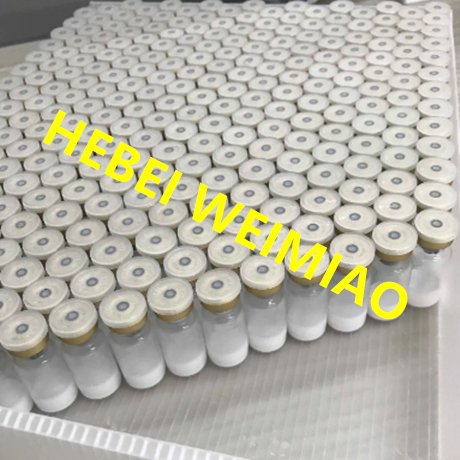
- +86-13363869198
- weimiaohb@126.com

Dec . 25, 2024 08:38 Back to list
Pharmaceutical Formulation Agents and Their Role in Drug Development and Production
Pharmaceutical Formulation Intermediates The Backbone of Drug Development
In the realm of pharmaceutical development, the journey from molecule to market is intricate and multifaceted. At the heart of this journey lies the critical component known as pharmaceutical formulation intermediates. These substances act as pivotal building blocks in the formulation of drugs, influencing the efficacy, stability, and overall quality of the final product. This article delves into the significance, types, and challenges associated with pharmaceutical formulation intermediates.
Understanding Pharmaceutical Formulation Intermediates
Pharmaceutical formulation intermediates are chemical compounds that are utilized in the formulation process of drug products. They can be classified into various categories, including excipients, stabilizers, coatings, and adjuvants. Each of these intermediates plays a distinct role in enhancing the properties of the active pharmaceutical ingredient (API), thus ensuring better therapeutic outcomes.
For instance, excipients are inactive substances formulated alongside the API that can aid in drug delivery, improve bioavailability, and enhance the stability of the final product. Common excipients include sugars, starches, and polymers, which help shape the drug’s physical characteristics, such as texture and solubility. On the other hand, stabilizers are crucial in maintaining the integrity of pharmaceutical formulations by preventing drug degradation due to environmental factors like temperature, humidity, and light.
Key Types of Intermediates
1. Excipient Materials These are non-active substances used to formulate the final drug product. They can impact the drug's release profile, absorption rate, and bioavailability. For example, lactose is often used as a filler in tablet formulations, while polyethylene glycol (PEG) can serve as a binder.
2. Stabilizers These intermediates are essential for maintaining the chemical stability of the drug over time. They often work by preventing oxidation, hydrolysis, or photodegradation of the active ingredient. Common stabilizers include antioxidants like ascorbic acid and chelating agents like EDTA.
3. Coating Agents These intermediates are employed to create a protective layer around the drug, which can result in improved taste masking, extended-release profiles, or targeted delivery. Film-forming agents such as hydroxypropyl methylcellulose (HPMC) are frequently used for coating purposes.
pharmaceutical formulation intermediates

4. Adjuvants In formulations that involve vaccines or biological therapies, adjuvants are necessary to enhance the immune response. They work by modulating the body’s immune system to recognize and respond to the active ingredient more effectively. Common adjuvants include aluminum salts and emulsifiers.
Importance of Quality Control
The development and use of pharmaceutical formulation intermediates are highly regulated to ensure the safety and efficacy of the final product. Quality control measures are essential at every stage—from the sourcing of raw materials to the production of intermediates and their incorporation into drug formulations. Adherence to guidelines set by regulatory bodies such as the FDA or EMA is paramount.
Moreover, the complexity of modern pharmaceuticals, especially in the era of personalized medicine, demands a higher degree of precision in the formulation process. Continuous advancements in technologies such as nanotechnology, bioengineering, and computational modeling are enhancing our ability to design and manufacture high-quality formulation intermediates.
Challenges in Formulation Development
While the role of pharmaceutical formulation intermediates is undeniable, developers face several challenges during the formulation process. One significant challenge is compatibility. Ensuring that every component of the formulation works harmonically without negative interactions is crucial for maintaining the drug’s effectiveness.
Another challenge is scalability. Transitioning from laboratory-scale production to large-scale manufacturing often presents difficulties due to changes in equipment, conditions, and raw material availability. It's vital to ensure that the formulation maintains its integrity and performance throughout this scaling process.
In conclusion, pharmaceutical formulation intermediates are indispensable elements in the drug development process, contributing to the optimization of therapeutic efficacy and patient safety. As the pharmaceutical industry continues to innovate and evolve, understanding and enhancing these intermediates will remain a central focus for researchers and formulators alike. Through meticulous quality control and an emphasis on compatibility and scalability, the path from formulation to final product can remain robust and effective, ultimately leading to better health outcomes for the global population.
-
AI-Optimized CAS: 79099-07-3 Factories for High Yield
NewsAug.01,2025
-
Premium CAS 1451-83-8 Factory with GPT-4 Turbo | AI-Optimized
NewsJul.31,2025
-
Pharmaceutical Intermediates - AI-Optimized Synthesis & Purity
NewsJul.31,2025
-
Top CAS: 79099-07-3 Factories & Wholesale Supplier from China
NewsJul.30,2025
-
High-Quality GS-441524 for White Liquid Type Factories & Suppliers
NewsJul.29,2025
-
High-Quality Pharmaceutical Intermediates for Sale – Reliable Supply
NewsJul.29,2025